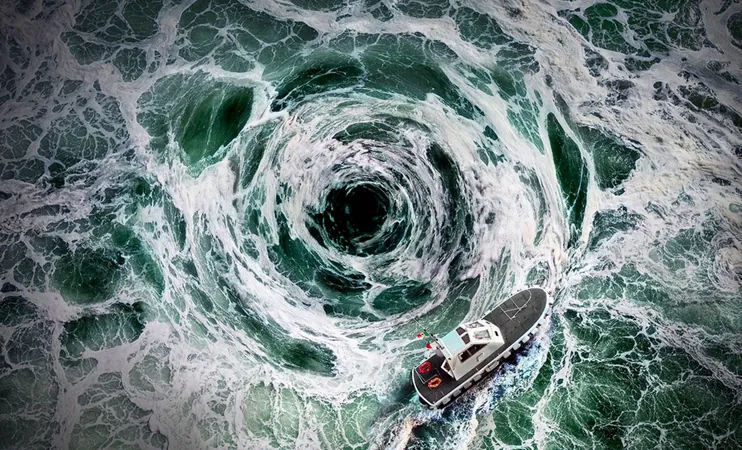
Ancient Geological Shift: Sea Levels Plummeted by 30 Meters!
2025-04-27
Author: Jessica Wong
Unveiling the Hidden Forces Behind Past Sea Level Drops
In an astonishing discovery, recent research reveals that a geological anomaly from millions of years ago could have caused the Earth's sea levels to plunge by a staggering 30 meters! This breakthrough highlights how ancient seafloor dynamics played a crucial role in shaping our planet's oceanic landscapes.
The Deep Dive: Understanding Ancient Ocean Basins
Between 15 and 6 million years ago, a notable slowdown in seafloor spreading led to a dramatic dip in ocean crust production—down by around 35%. This slowdown resulted in the deepening of ocean basins, triggering a waterfall effect that dropped global sea levels by an incredible 26 to 32 meters—comparable to the alarming rise we might witness today if the massive East Antarctic Ice Sheet were to melt!
Groundbreaking Research Adds New Layers of Insight
Led by the brilliant Colleen A. Dalton and her team, this research—published in Geochemistry, Geophysics, Geosystems—employs meticulous calculations that account for varying initial conditions regarding ocean crust age and area. These calculations reveal the staggering impact of geological processes on our planet's water levels.
Cool Down! How Heat Flow Changes Altered Global Climate
But there's more! The slowdown in seafloor spreading didn't just lower sea levels—it also reduced heat flow from Earth's hot mantle by about 8%, drastically changing thermal conditions. Hydrothermal activity around ocean ridges saw a 35% decrease, potentially transforming ocean chemistry and contributing to a significant global cooling phase.
With increased ice sheet expansion, more water became locked in ice, leading to even lower sea levels. If the process had sustained, researchers speculate we could have seen an additional drop of 60 meters due to thermal contraction and the growing mass of ice sheets!
Rock Solid Evidence: Checking the Geological Record
While direct sea level records from the last 15 million years are scant, this study aligns with geological evidence found in coastal rock formations from New Jersey to offshore Nova Scotia—confirming the historical significance of the seafloor's transformation.
Though previous studies have ventured into the links between seafloor spreading and sea level variations, this meticulously refined research stands out for its robust statistical analysis, bringing new clarity to our understanding of this pivotal period.

 Brasil (PT)
Brasil (PT)
 Canada (EN)
Canada (EN)
 Chile (ES)
Chile (ES)
 Česko (CS)
Česko (CS)
 대한민국 (KO)
대한민국 (KO)
 España (ES)
España (ES)
 France (FR)
France (FR)
 Hong Kong (EN)
Hong Kong (EN)
 Italia (IT)
Italia (IT)
 日本 (JA)
日本 (JA)
 Magyarország (HU)
Magyarország (HU)
 Norge (NO)
Norge (NO)
 Polska (PL)
Polska (PL)
 Schweiz (DE)
Schweiz (DE)
 Singapore (EN)
Singapore (EN)
 Sverige (SV)
Sverige (SV)
 Suomi (FI)
Suomi (FI)
 Türkiye (TR)
Türkiye (TR)
 الإمارات العربية المتحدة (AR)
الإمارات العربية المتحدة (AR)